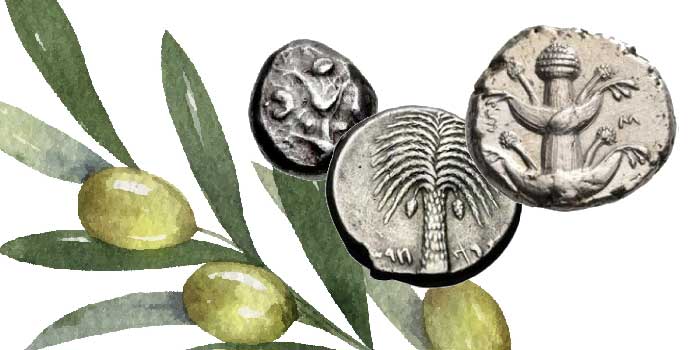
By Willem Knapen – Numismatist, Catawiki ……
Ancient coins were the medium par excellence for bringing classical civilizations together and allowing cities to grow, and often featured the faces of rulers that were or felt responsible for this growth, in which cases coins were an excellent means of propaganda. The Persian satrap of Mysia, Tissaphernes (circa 445-395 BCE), may have been the first to put the portrait of a living person on a coin. And, although it was in contrast to Greek custom, this practice was adopted by the Greeks by the late fourth century BCE. Taking it to the next level, the realistic portraits of rulers on the coinage of the kingdoms of the Diadochi (third to first century BCE) can be considered as masterpieces of Hellenistic art.
But prior to this development, ancient coins tended to show an iconography representative of the issuing polis or city-state. Initially, they used basic geometric patterns, but by the mid-sixth century BCE, Greek city-states were using figural designs. Local deities or animals referring to these deities were popular subjects. Plants and trees, despite being depicted less frequently, are the main subject of various series. Sometimes they merely symbolize their importance to a city-state, but often they were a pun on the city’s name, 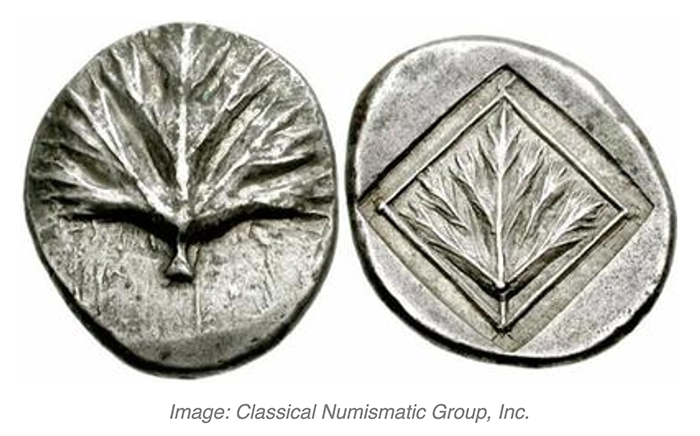 which will be illustrated in this article by highlighting five iconic Greek coins.
which will be illustrated in this article by highlighting five iconic Greek coins.
One of the earliest examples of Greek coinage featuring plants is this silver didrachm of Selinos (modern Selinunte, Sicily), struck circa 515-470 BCE (ref: SNG ANS 684). Selinos, situated on the south-west coast of Sicily, was founded in the mid-seventh century BCE by Greek colonists from Megara Hyblaea and rose to prominence as a polis or city-state in the Classical period (479-336 BCE). Both the colony and the nearby river Selinos after which it was most likely named derive their names from the wild selinon or wild celery (Greek: σέλινον – Romanised: selinon) that grew there.
Celery, chthonic (associated with the Underworld and the cult of the dead) to the Greeks for its dark color and strong smell (hence the scientific name Apium graveolens; Graveolens means “strongly smelling”), was often used in funeral banquets and funeral wreaths. It was highly valued as a sacred plant and also used for the wreaths given to winners at the Isthmian Games (associated with the sea god Poseidon) and the garlands worn by victors at the Nemean Games (associated with the hero Herakles and his father Zeus).
The selinon leaf was adopted as the symbol of the polis–possibly because of its importance and abundance, but surely because it is a pun on the town’s name–and is a key element on ancient Selinuntian coins, as can be seen on the didrachm above; both obverse and reverse feature a palm-like selinon leaf, the one on the reverse within a linear border in an incuse square.
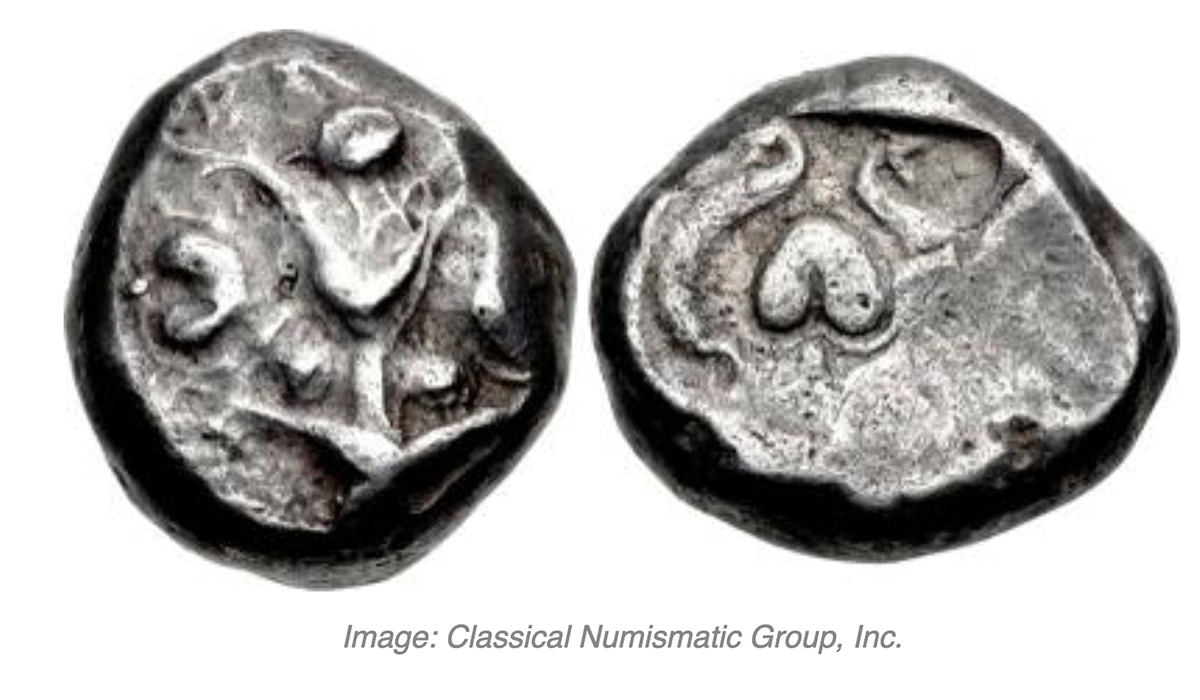
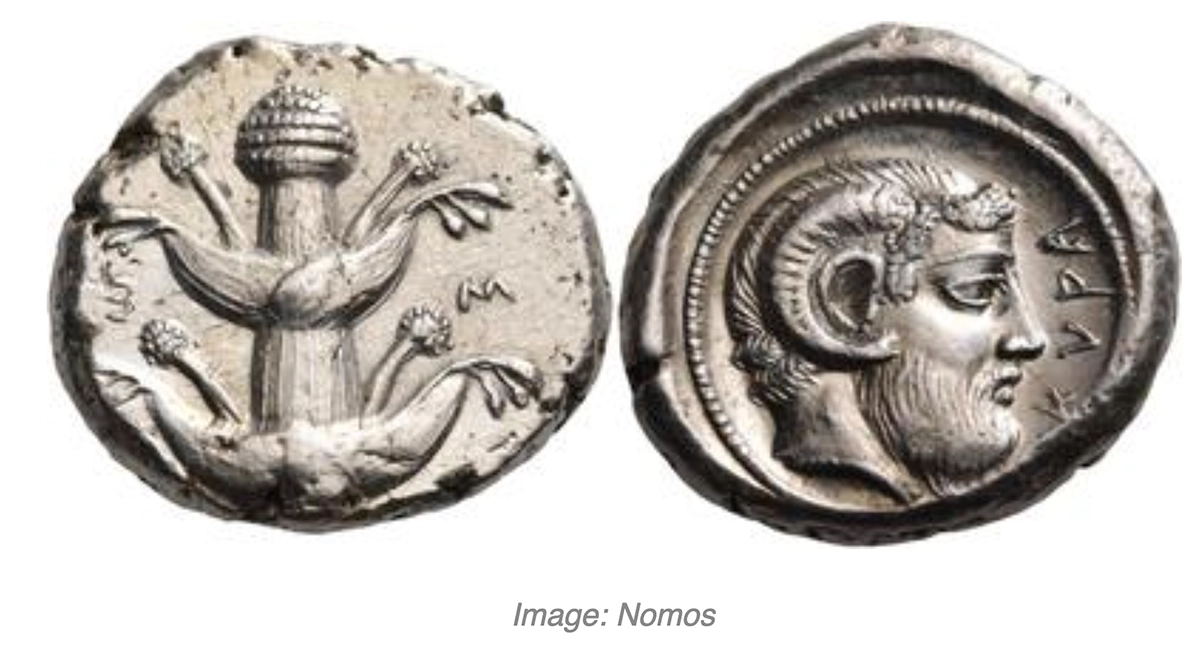

Three other ancient coins that I would like to highlight are these silver tetradrachms of Kyrene, a city in Kyrenaika (modern eastern Libya). Both the first (ref: BMC 16; SNG Copenhagen 1163) and the second (ref: Cf. BMC p. xlii, 60e and pl. VII, 19) were struck around 480-435 BCE; the third one (ref: BMC 12) was struck around 520-500 BCE.
Kyrene, named after the spring Kyre, was founded in approx 630 BCE by Greek colonists from Thera led by Battus Aristotle. By the mid-fifth century BCE Kyrene, by then a Republic, was one of the most important cities of North Africa and because of its importance, the city gave eastern Libya the name Kyrenaika. Kyrene was able to become such a prosperous city partly because of the flourishing trade in silphium, a plant that grew in Kyrenaika and of which its resin (laser, laserpicium, or lasarpicium) was used for various reasons.
There is an ongoing debate on the identity of silphium. Many, including me, assume it to be an extinct plant similar to fennel or celery. Others suggested that it might be related to one of the extant plants Margotia gummifera and Ferula tingitana, and possible causes of silphium’s supposed extinction include overgrazing or overharvesting and desertification of the area. Theophrastus (371-287 BCE) mentions silphium in Historia Plantarum and notes that it wasn’t possible to cultivate the plant. Pliny the Elder (23/24-79 CE) states in Naturalis Historia that the last sample of silphium from Kyrenaika was given to the Roman emperor Nero (54-68 CE).
There are numerous other historical sources on the use of the plant. Hippocrates (460-370 BCE) elaborately describes the use of silphium as a remedy for various illnesses (stomach and liver problems, epilepsy, et al.). Others point out the use of silphium as a means of birth control. The Greeks associated the plant with the healing god Apollo, who, according to the fifth century BCE lyric poet Pindar, carried the nymph Kyrene, whom he had fallen in love with, from Thessaly to Libya, where he founded the city bearing her name. Besides its medical use, silphium was also appreciated as an aphrodisiac and as a seasoning.
Because of its significance, the plant was adopted as the city’s symbol in the late sixth century BCE and prominently depicted on the city’s coinage until the third century BCE. The first example shows both the leaves (on the obverse) and the fruit (on the reverse, flanked by two dolphins). The second example features a detailed depiction of a silphium plant with two pairs of leaves and five umbels on the obverse, while the reverse bears a portrait of the syncretic god Zeus-Ammon, who was honored in Kyrene.
The third example possibly shows the plant’s importance as a contraceptive: the nymph Kyrene depicted on the obverse has her right hand touching silphium, and her left hand resting in her lap.
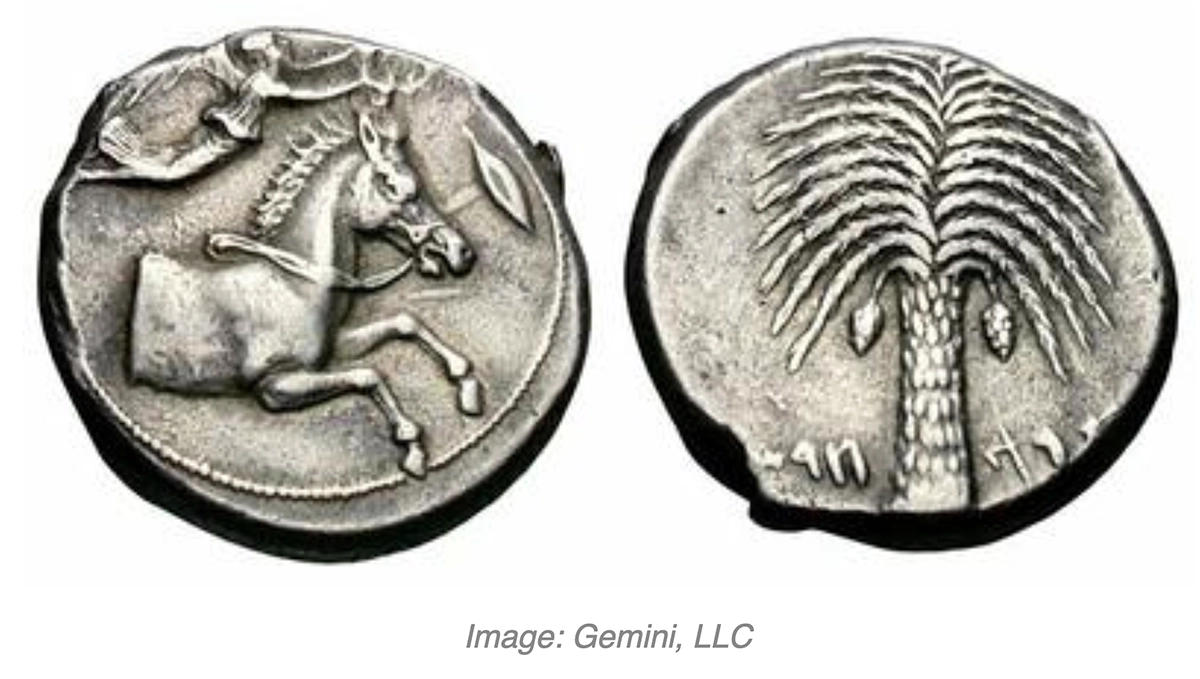
Another noteworthy ancient coin is this Siculo-Punic silver tetradrachm (ref: SNG Copenhagen 71), struck by Carthaginians in Sicily around 410-395 BCE in order to finance the Carthaginian military campaigns which resulted in the Second Sicilian War (410-404 BCE) and the Third Sicilian War (398-393 BCE).
The coin is filled with Carthaginian symbolism: the forepart of the bridled horse on the obverse possibly refers to one of Carthage’s foundation legends that tells about the finding of the head of a horse–a Phoenician symbol of conquest and courage–by Phoenician colonists from Tyre led by its exiled princess Dido, foretelling where Carthage would rise. The horse is accompanied by Nike holding a wreath (often given to victors in battles) which could also symbolize the military motive of this coinage.
G.K. Jenkins and R.B. Lewis offer another interpretation and suggest the horse be a religious emblem related to the sun-god, a theory supported by J. Ferron, who points out various sun symbols that accompany the horse on other, later, Carthaginian coins. Ba’al Hammon, the Punic chief god, was equated with the sun-god, and according to Ferron, the horse refers to this god.
The palm tree with drooping branches on the reverse might be a fertility emblem, but it is most likely a pun on the origin of the Carthaginians, Phoenicia. The word “Phoenician” derived from Greek Φοίνικες (Phoínikes), and the word φοῖνιξ (phoînix) also means date palm. Some consider it unlikely to find a typical Greek pun on a Punic coin, but Greek was also spoken and understood in the Carthaginian settlements in Sicily.




